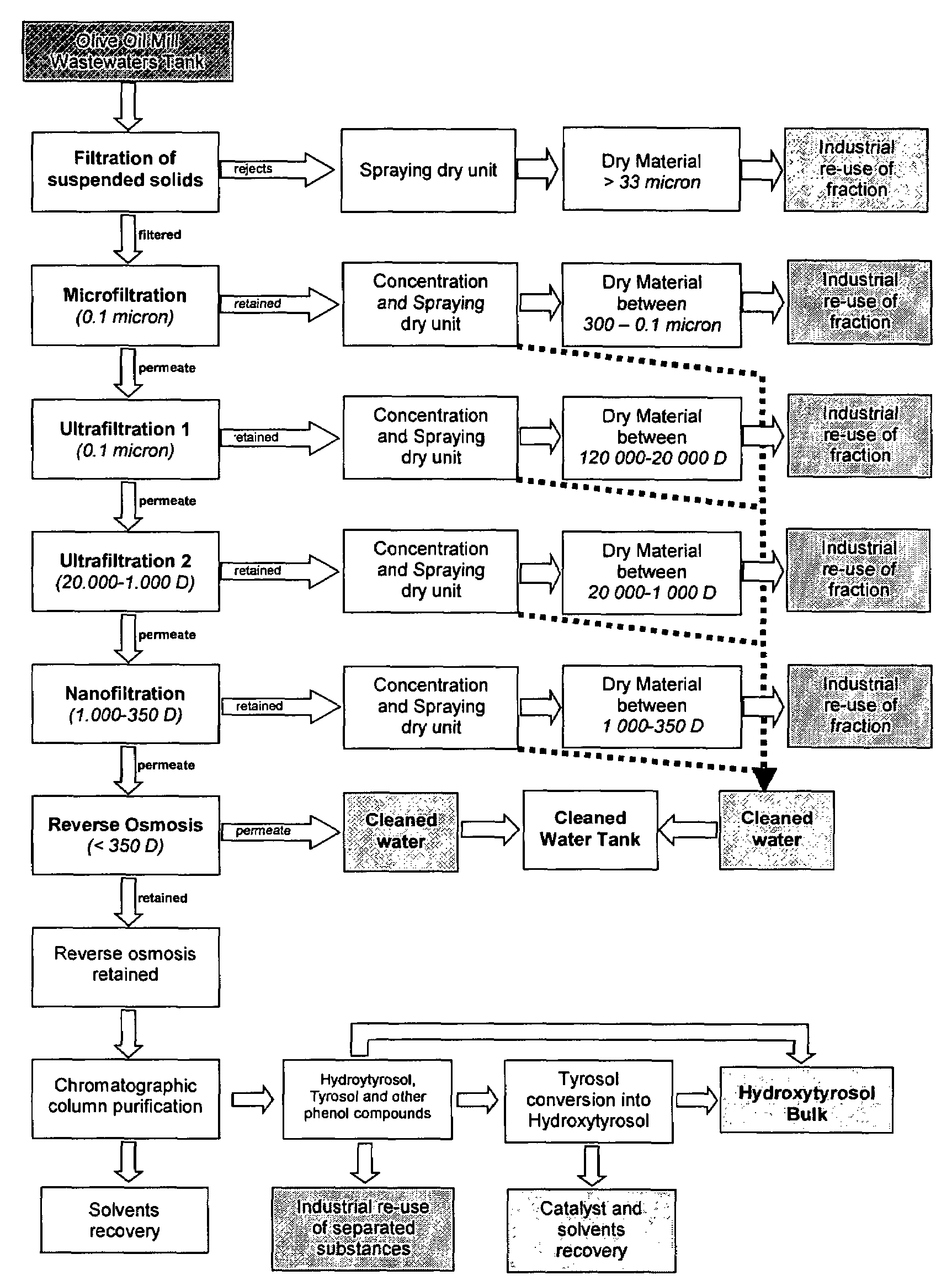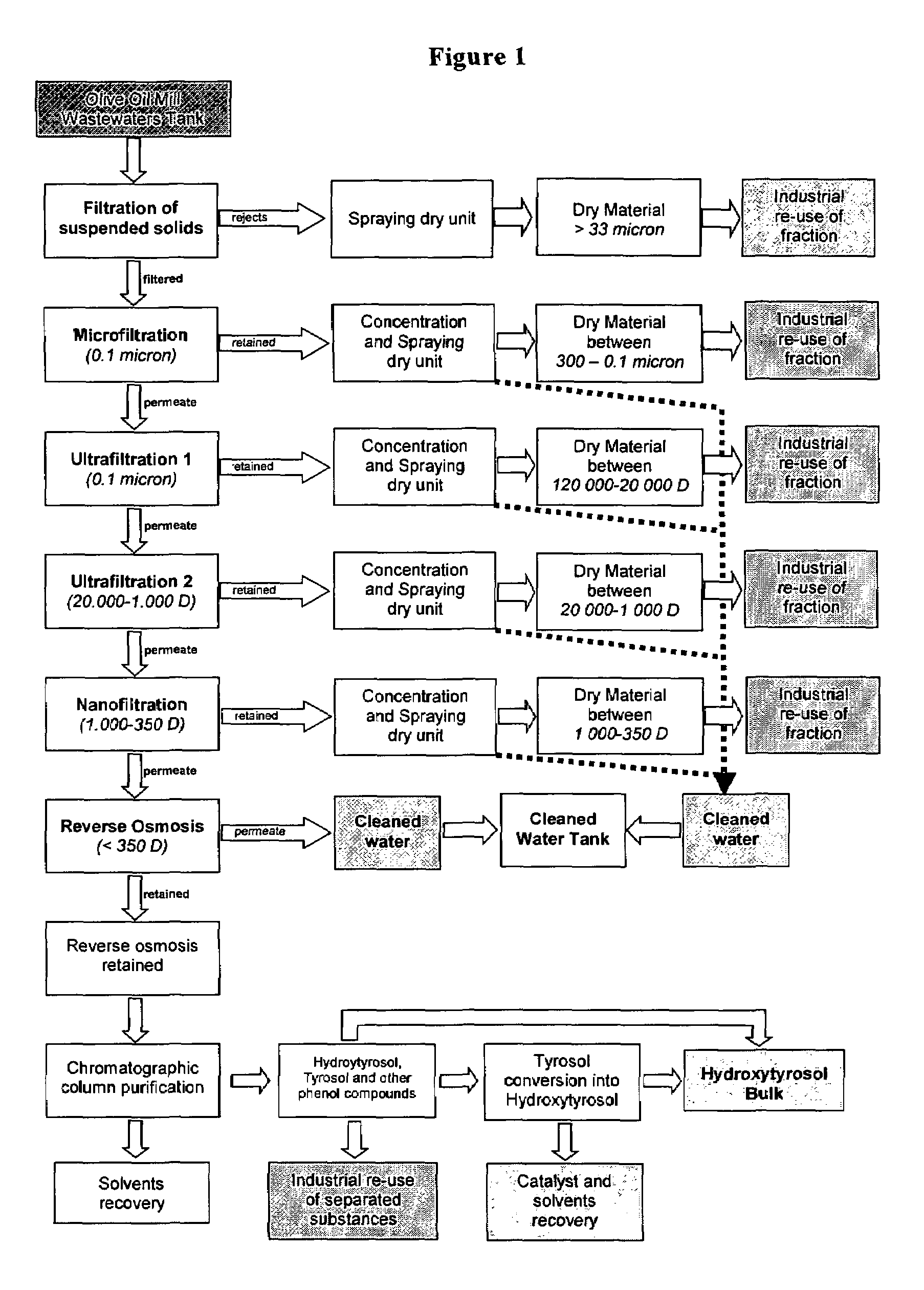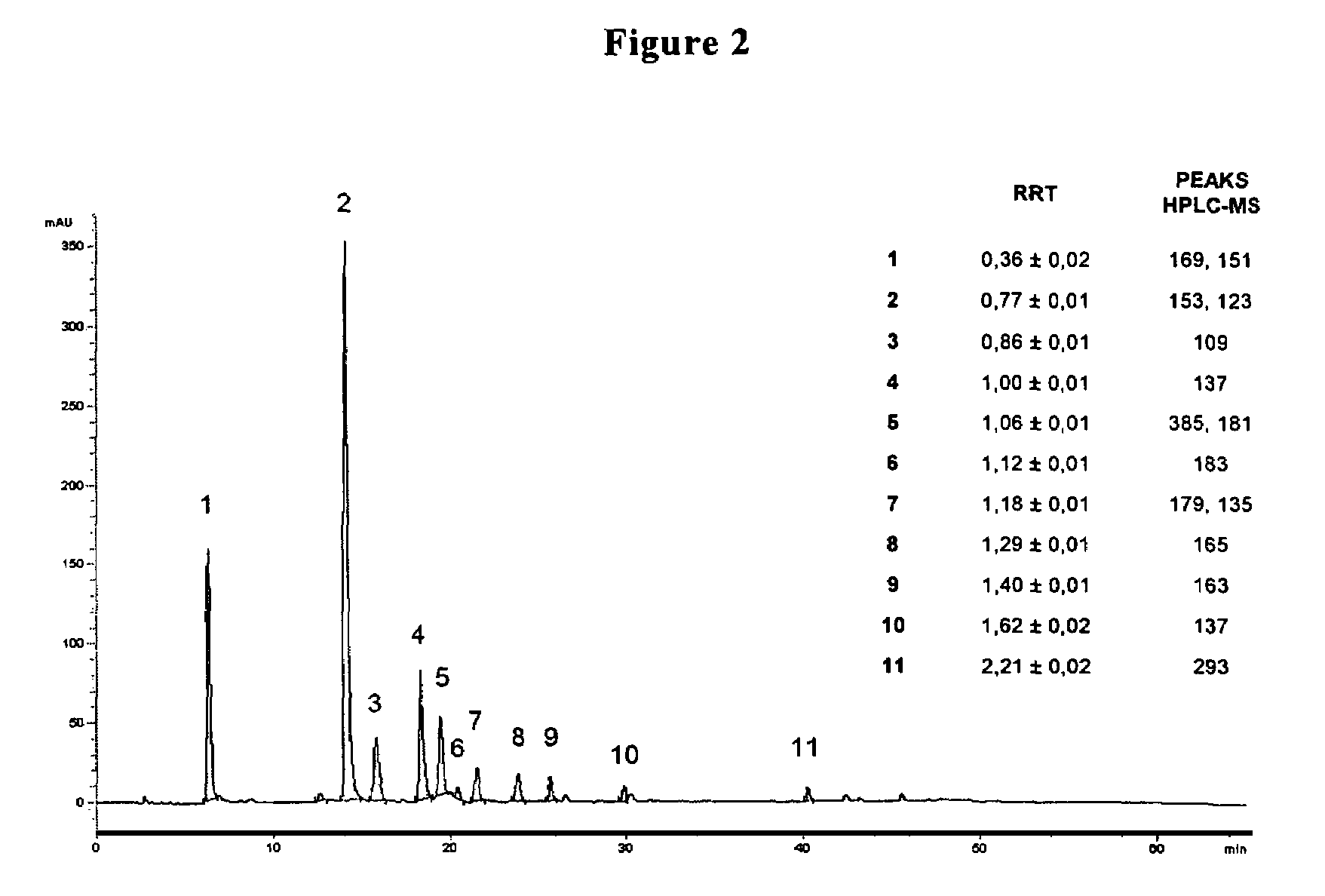Process for the recovery of tyrosol and hydroxytyrosol from oil mill wastewaters and catalytic oxidation method in order to convert tyrosol in hydroxytyrosol
a technology of hydroxytyrosol and oil mill wastewater, which is applied in the direction of catalytic reactions, organic compounds/hydrides/coordination complexes, catalysts, etc., can solve problems such as no satisfying solution availabl
- Summary
- Abstract
- Description
- Claims
- Application Information
AI Technical Summary
Benefits of technology
Problems solved by technology
Method used
Image
Examples
example 1
[0034]Combined Treatment of OMW by Process of Micro, Nano, Ultrafiltration, Inverse Osmosis and Techniques of Separation and Recovery
[0035]FIG. 1 is a diagram of the main component of the extract obtained by the different fractions.
[0036]FIGS. 2 and 3 are graphs showing concentration fractions obtained by the different steps of filtration by measuring the macro-descriptive parameters with respectively spectroscopic (FIG. 2) and spectrometric methods (FIG. 3).
[0037]FIG. 4 is a bar chart showing the effectiveness of various catalysts used to oxidize Tyrosol to Hydroxytyrosol; and
[0038]FIG. 5 is a diagram showing the percent variation in color and luminosity, with time, of the lotion of the present invention compared to a placebo.
[0039]The pilot-plant has been provided by the firm Hydro Air Research according to the Applicant's project and consists of three units.
[0040]The first unit consists of 7 rough filtration modules installed in the sequence described here below:
[0041]
ModuleLight...
example 2
Tyrosol Catalytic Oxidation to Hydroxytyrosol in Homogeneous and Heterogeneous Conditions
[0058]Different reactions have been performed (Scheme 2) and their results are resumed in Table 3.
[0059]
[0060]As a general procedure, all reactions have been performed on one gram of Tyrosol in the solvent (5 ml) at the indicated temperature (see table) being present 10% of weight of MTO and an excess of H2O2 (about 2.5 equivalents). Reactions were treated with EtOAc extraction. Organic extracts were dried on anhydrous sodium sulphate and evaporated in a Rotavapor® at reduced pressure. The raw reaction material was purified by flash-chromatography.
[0061]
TABLE 3Results of the homogeneous oxidation of Tyrosol to HydroxytyrosolCatalystSolventsTemperature ° C.Conversion %Yield (a) %MTOEtOH2025100MTOEtOH458620MTOCH3COOH2000MTOCH3COOH455528MTOH2O204235MTOH2O455075(a) Yields are expressed in percentage of conversed.
[0062]The best results have been obtained with MTO (10% of weight compared to the substr...
example 3
Applicative Use of One of the Purified and / or Semi-Synthesized (Hydroxytyrosol) Compound Obtained by the Described Process
[0086]Hydroxytyrosol, obtained with the innovative process here described, has been used on endothelial cell cultures obtained from human umbilical veins endothelium (HUVECs) sampled and stored as described by Carluccio and co-workers [Carluccio M. A., et al.; “Olive oil and red wine antioxidant polyphenols inhibit endothelial activation: antiatherogenic properties of Mediterranean diet phytochemicals”; Arteroscler. Thromb. Vasc. Biol. 23, 622-9 (2003)], and on a monocytic cell line U937 obtained from the American Type Culture Collection, grown in RPMI1640 containing 10% FCS.
[0087]To evaluate the inhibition of cell growth, HUVEC and U937 monocytes proliferation was followed counting vital cells using the trypan blue exclusion method and using the MTT (3-[4,5-dimethyl (thiazol-2-yl)]-3,3diphenyltetrazolium-bromide) assay as described by Fabiani and co-workers [Fab...
PUM
| Property | Measurement | Unit |
|---|---|---|
| temperature | aaaaa | aaaaa |
| concentration | aaaaa | aaaaa |
| concentration | aaaaa | aaaaa |
Abstract
Description
Claims
Application Information
 Login to View More
Login to View More - R&D
- Intellectual Property
- Life Sciences
- Materials
- Tech Scout
- Unparalleled Data Quality
- Higher Quality Content
- 60% Fewer Hallucinations
Browse by: Latest US Patents, China's latest patents, Technical Efficacy Thesaurus, Application Domain, Technology Topic, Popular Technical Reports.
© 2025 PatSnap. All rights reserved.Legal|Privacy policy|Modern Slavery Act Transparency Statement|Sitemap|About US| Contact US: help@patsnap.com



